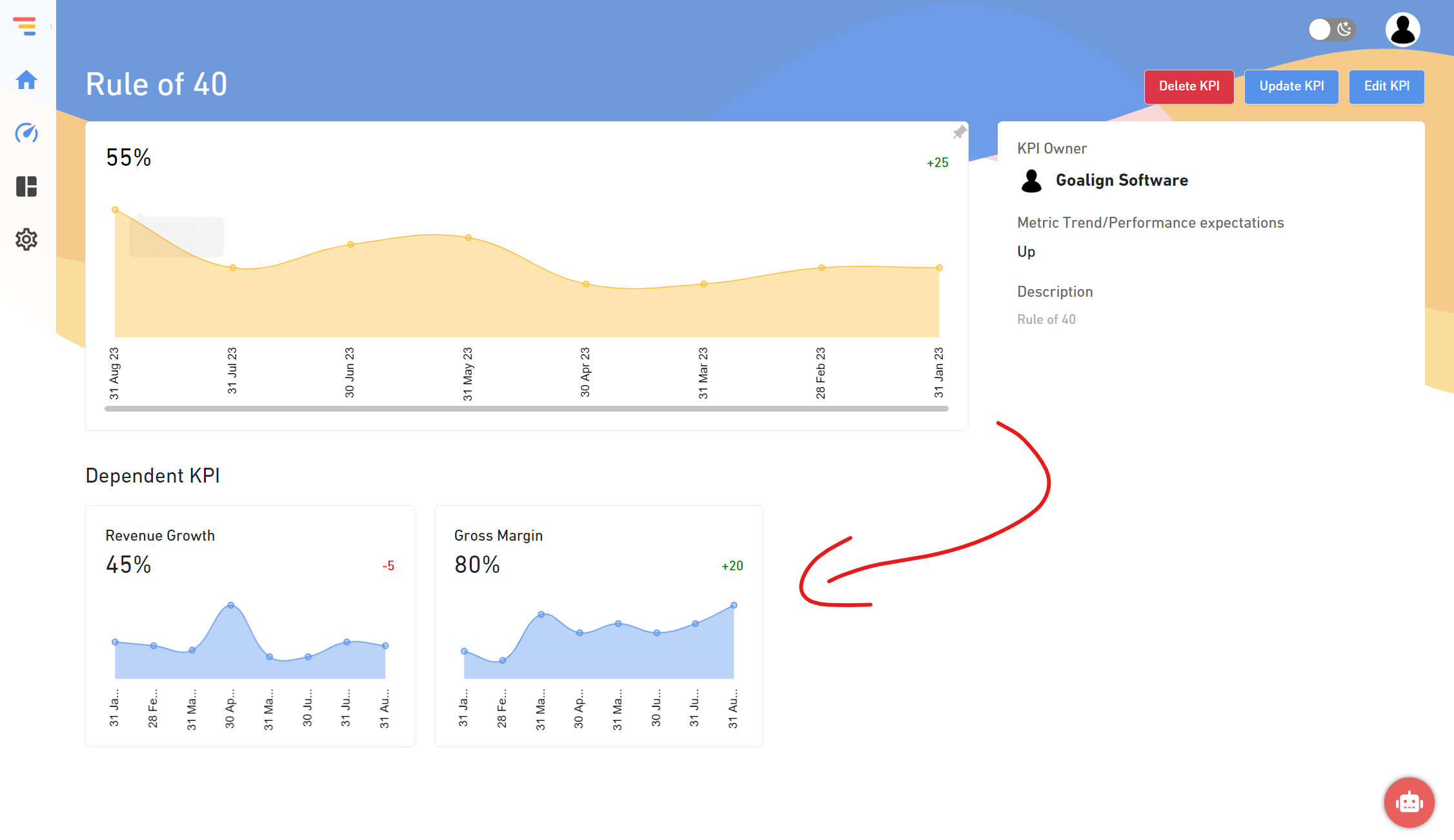Introduction to Free OKR Tools:
A sales team that lacks objectives is like a car that lacks wheels. The engine will turn on but will not move. You may already have a sales strategy in place to keep your sales staff on track. However, if you don’t set the right sales goals, you risk stagnating. You may get out a whiteboard and brainstorm some objectives on the spur of the moment. Setting OKRs may assist you in focusing on growth, and studies show that sales leaders who do so are more successful in the long term.
Let’s define OKRs and how you may use them to assist your sales team in succeeding.
What's OKR for?
OKR stands for Objectives and Key Results, a common goal management framework that assists businesses in implementing and executing strategy.
The framework’s benefits include a stronger emphasis on results that matter, more openness, and better (strategic) alignment if properly applied. OKR does this by organizing personnel and their work around common goals.
An OKR comprises an Objective that tells you where you want to go and many Key Results, which are the outcomes you need to attain to reach your Objective. Initiatives include all initiatives and actions that will assist you in achieving your Key Results.
OKR Framework
An OKR goal consists of three components: a target, a time frame, and a list of critical results. Let’s dissect these.
Objective
This specifies the goal’s qualitative outcome and what we want to achieve. Your goal should be brief and simple enough for everyone in your business to comprehend.
Period
Time Amount A fixed period is used to assess the success of measures performed to achieve your goal. Many teams set OKRs for a three-month term to correspond with their quarterly business cycles.
Key Results
Measurable outcomes are divided into three essential products that grow in difficulty. Consider each significant achievement a “milestone” that pushes your team closer to your ultimate Objective.
- The first key outcome is a quantifiable target that we can achieve with 80% confidence.
- Key outcome number two: a quantifiable target that we can achieve with 50% confidence.
- The third key result is a quantifiable target that we can achieve with a 20% confidence.
Now that you understand the nature of the OKR framework let’s look at how to set them.
Step by step to Create Your First OKR
1. Identify areas of growth.
What do you believe your team needs to work on the most? Setting OKRs that address these areas of development might be a great place to start.
For example, if only 75% of sales agents reached quota last quarter, you could set a goal of increasing that figure by 10% by the end of the next quarter. The following are possible outcomes:
- Key result one: every sales rep spends an additional hour locating more qualified leads each day.
- Key result two: every sales professional now schedules two more weekly meetings than they did previously.
- Key result three: each sales agent closes eight more deals each month than they did previously.
2. Align OKRs with overall company goals.
Every OKR you set must be in line with the company’s overall aims. Whether your company’s management aim to grow net profits by a certain amount or minimize customer turnover by a certain percentage, every goal must contribute to that goal.
Revenue goals for the entire company are straightforward since you may change the revenue objectives of any team member to assist achieve that goal. But what if the company wants to do something less sales-related, like reducing security concerns for present customers?
You might check for flaws in your sales processes and implement OKRs to reduce consumer information mistreatment. However, keep in mind that the essential outcomes must be specific and measurable.
3. Establish measurable objectives.
OKRs must be quantified; there is no room for ambiguous goals like “increase revenue” or “sell more things.” Assign a number or percentage to each OKR, beginning with the aim and working your way down to the actual results.
If no tangible measurement is tied to each OKR, you risk establishing an unrealistic or unreachable objective.
4. Obtain feedback from the whole team.
When establishing the target and critical results, it is essential to solicit feedback from the whole team rather than having goals come from the top and trickle down.
That way, your team members won’t feel as if they don’t have a voice — and the reality is, your sales reps are likely to have a better knowledge of the targets they can attain. Please pay close attention to what they say, and don’t forget to incorporate their suggestions immediately into each OKR objective.
5. Ensure that individual sales representatives are aware of their responsibilities.
Because they are specifically intended for teams, OKRs are highly effective. However, each OKR objective should include an explicit command for individual representatives on what they must accomplish each week or month to assist the team in achieving its essential goals.
For example, if you aim to boost revenue by 20%, have each team member spend one hour extra per week upselling five of their current clients, intending to close one more upselling deal per week.
6.Remove impediments and offer encouragement.
When sales teams face challenging targets, it’s all too easy for reps to become disheartened – especially if they encounter hurdles or don’t receive adequate assistance. If your team is having difficulties with a current tool or process, be sure to eliminate any impediments to achieving their objectives efficiently.
7. Make a chart to track your development.
We recommend designating a location to log your team’s progress toward your Objective after each week. This maintains your OKRs at the forefront of your team’s minds and holds everyone accountable for their role in assisting the business in reaching its objectives.
Benefits of using OKR goals
- Align your company: OKR goals inform and align your company’s activity to the leading corporate objectives.
- Create clarity and focus: everyone understands their clearly defined goals, and the entire firm is focused on the most important things.
- Tie your workers to your mission: connect your employees’ job to your firm’s mission–this affects your employees’ performance and the results of your organization.
- Develop continuous learning: By requiring regular check-ins, OKRs allow your firm to learn and improve more quickly, resulting in more outstanding results. Accountability is improved by monitoring and measuring your main results and key performance indicators.
- Transparency: OKRs add transparency to your firm by allowing everyone to see what others are working on, resulting in greater collaboration and performance.
- Accelerate your results by: Your firm will accelerate performance and achieve more significant results by focusing on clarity, focus, alignment, connection, and continual learning.
Conclusion:
As you can see, the OKR framework can be used for a wide range of goals and projects, eventually making your sales staff more effective and accountable for their contributions to the overall objectives. Setting OKRs will propel your team to success and enable you to outperform your organization’s goals.






